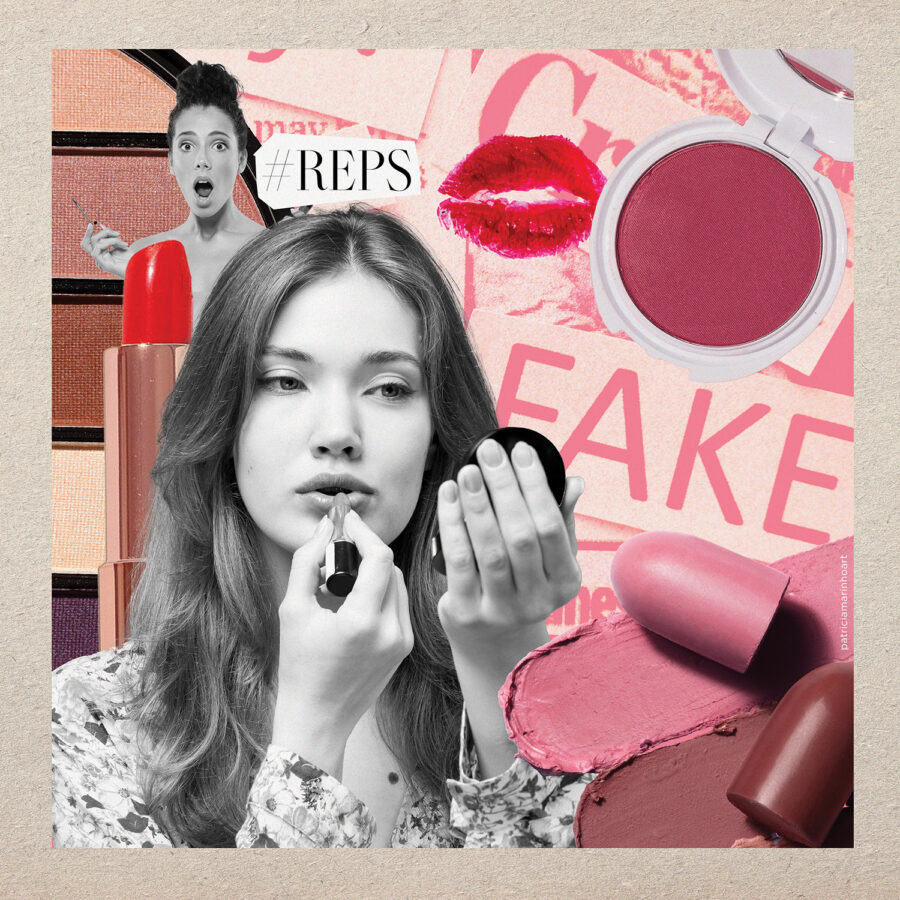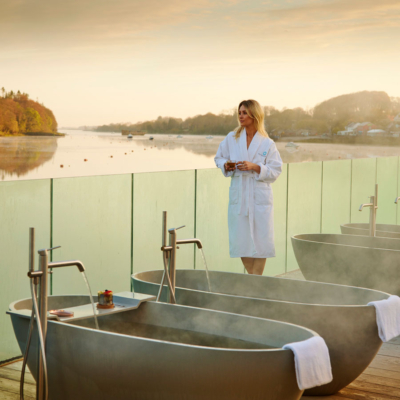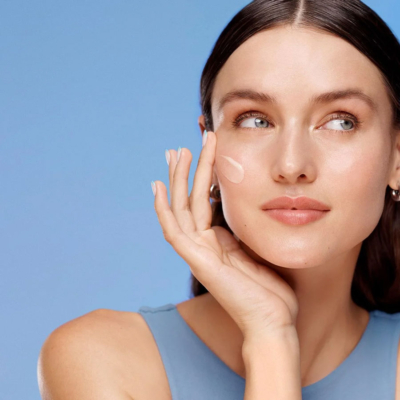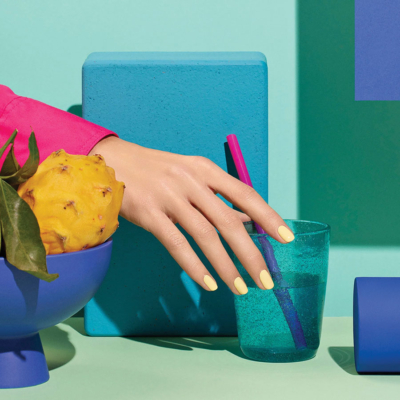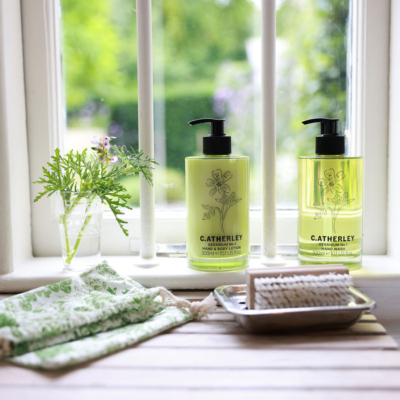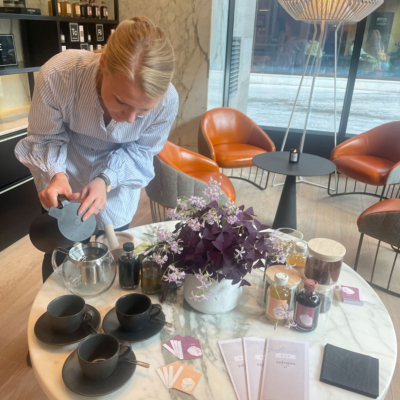Once confined to dodgy street markets, the rise in social media shopping has seen an explosion in the sale of counterfeit cosmetics – and the proliferation of these beauty knockoffs has raised a litany of legal, health and ethical concerns, as Elaine Maguire O’Connor discovered …
Several years ago, I was left feeling bereft when I discovered that Benefit’s Coralista blusher had been discontinued. The shade, a dusty peach with a subtle shimmer, was the only one I had found that warmed my ghost-like complexion and didn’t result in Aunt Sally staring back at me from my bathroom mirror. When my plan to stockpile the blusher prior to its removal from the Barbie-pink shelves of the Benefit store failed – it had already sold out – I began an online scavenger hunt and, against my better judgement, purchased one from an eBay seller. Unfortunately, it was immediately obvious when I opened the parcel that the little box, faded and muted in colour, was not genuine. The mirror inside was askew and the powder itself was a chalky pink. In my desperation, I’d been duped into purchasing a knock-off.
Once confined to dodgy street markets, the rise in social media shopping has seen an explosion in the sale of counterfeit cosmetics. No longer are the names misspelled and the colours of the packaging pallid and lacklustre. Today, fakes can be almost impossible to distinguish from genuine products without beady-eyed inspection. The counterfeit industry has grown exponentially, and the proliferation of knockoff cosmetics has raised a litany of legal, health and ethical concerns. Counterfeits make up approximately five per cent of all beauty products sold in the EU, and account for three billion euro in sales. Here in Ireland, the problem is bigger again, with the figure rising to six per cent of cosmetics sold and almost 50 per cent of 15 to 24-year-olds believing that it is acceptable to buy phony products if the price of the original is too high.
“What’s the harm?” is a question that arises repeatedly when it comes to purchasing fakes. Eyes glaze over when I mention words like trademarks and intellectual property theft – and I understand – it’s difficult to feel much sympathy for global cosmetics brands, especially ones who charge €50 for an eyeshadow palette or €30 for a thimble of lipstick. But the problem is that it’s not just the brands who are suffering. Amongst the worst crimes associated with illicit trade is the fact that it is heavily associated with slave and child labour. Organised crime gangs, mainly in China, use children as young as six-years-old to manufacture their products. And then there’s us, the consumers. While we can all disassociate ourselves from unpalatable manufacturing practices that may or may not be happening further down the distribution chain, it’s a lot more difficult to ignore an allergic reaction to a dodgy perfume that causes you to break out in a rash or a lipstick that literally sticks your lips together like superglue.
Providing the glossy consistency associated with current lip product trends, glue has become an increasingly popular ingredient used in knockoff lip gloss. The internet is rife with stories of customers who have been conned into purchasing what they believed to be genuine products, only to have their lips swell up, burn, peel or, in some horrifying reports, stick together. Kylie Cosmetics by Kylie Jenner is one of the most commonly cited brands that has been targeted for copying. Worryingly, it’s also a brand whose target market is teenage girls, often less savvy to scams and more desperate to have the right ‘brand’ in their make-up toolkit.
It’s a lot more difficult to ignore an allergic reaction to a dodgy perfume that causes you to break out in a rash or a lipstick that literally sticks your lips together like superglue.
These copycats are not subject to the same health and beauty standards as genuine products and customers often don’t know what’s in them or how their skin will react. EU regulations require rigorous testing and safety checks before cosmetics or ingredients used in them are approved, but counterfeits don’t go through the same scrutiny. It’s not just glue in lipsticks that are the problem. There have been reports of cosmetics being manufactured in unsanitary warehouses riddled with rat droppings, and the products themselves often contain cancer-causing ingredients including beryllium and arsenic as well as lead, which can cause kidney failure and, in high enough doses, death. Counterfeit perfumes, claiming to be made by top luxury brands including Dior and Viktor & Rolf are often filled with animal urine to get the yellow colour associated with authentic perfumes. If and when consumers have an allergic reaction, there is no recourse. Sellers can vanish from online platforms with the click of a button and, even if it was possible to trace them, supply chains will usually lead back to criminal enterprises operating out of China and Southeast Asia.
The reasons for the growing demand for counterfeit products are manyfold, but the rise in influencer culture and the corresponding explosion in the beauty industry at large, are, in part, contributory factors. YouTube and TikTok vloggers creating beauty content have become celebrities in their own right – some with followers in their millions – and the products they use can sell out instantaneously following a single tutorial. And when the products sell out? The counterfeiters step in, targeting followers of popular beauty tutorials with adverts and direct messages. Consumers are often unaware that they are buying fake products, convinced by the seemingly legitimate images, reviews and websites and in some cases, unscrupulous influencers who themselves are being paid to promote fakes. Others, unaware of the potential consequences, knowingly purchase knockoffs in a bid to save money and get their hands on a must-have branded product.
It won’t come as a surprise to learn that brands themselves are desperate to stop their products being copied. Lost sales as well as negative reviews impact their bottom line and top luxury companies spend millions on brand protection every year.
“If a customer receives a product that causes a negative reaction, they’re more likely to blame the brand rather than to question whether it’s genuine. This can result in negative reviews on websites and online marketplaces, damaging a brand’s reputation,” Daniel Shapiro, SVP of Red Points, a brand protection agency that works with companies including Beauty Blender and Foreo, tells me. Red Points uses AI technology to search online marketplaces, websites and social media websites for counterfeit products and sends ‘take down’ notices to offenders. As counterfeiters become more sophisticated, companies are always looking for new methods to block them.
In January it was reported that LVMH, the parent company of multiple luxury brands including Benefit and Fenty Beauty, were in discussions with TikTok on a plan to address the sale of fake luxury products being sold on the app. The news came at a time when TikTok was under increasing scrutiny from media outlets over the sale of knockoffs on its platform. TikTok’s website claims that it doesn’t “permit the purchase, sale, trade, or solicitation of counterfeit goods” and offers guidelines on how to identify if a product is a fake. Yet, despite these claims, the app is still awash not only with counterfeits, but with influencers specifically promoting and encouraging followers to purchase knockoffs instead of wasting money on legitimate products. The hashtag #reps (meaning replicas) has over two billion views on TikTok. A quick scroll through videos uploaded reveals multiple references to counterfeits as well as links to messaging apps, Temu, and the TikTok shop itself, where the products can be found at discounted prices. It’s worth noting that TikTok profits from all sales on its platform, taking a commission on each sale.
Of all the industries that Red Points works with, it’s counterfeit cosmetics along with baby products that Shapiro finds most alarming, given the potential for serious health and safety consequences. But it’s not all bad news, and there are simple steps that beauty aficionados can take to avoid the labyrinth of fake products in the marketplace masquerading as the real thing.
HOW TO SPOT COUNTERFEIT COSMETICS
Price: Everyone loves a bargain but while cosmetics being sold at significantly discounted prices aren’t necessarily counterfeits, price is something that should definitely arouse your suspicion.
Place: Street markets, door to door salesmen, Sharon in your yoga class who swears she can get you a deal – it might seem obvious, but if you are buying cosmetics from an unauthorised distributor, the product is most likely counterfeit or stolen. And while the latter may not expose you to the same health and safety risks, it’s likely that someone, somewhere is paying the price. “Please do not buy beauty products online unless it’s directly from the brand or an official, authorised retailer,” says Shapiro. Buying direct from a beauty brand’s website or an official retailer is the safest way to not get caught out.
Packaging: While technological advances mean knockoffs are harder to spot, a close examination of a product’s packaging will highlight some inconsistencies, especially when held next to a genuine product. Incorrect spelling of shades and ingredients are often discovered as well as social media icons that use imprecise colours and lettering. Look out for broken or flimsy safety seals.
And remember the old adage – if something seems too good to be true, then it probably is.




